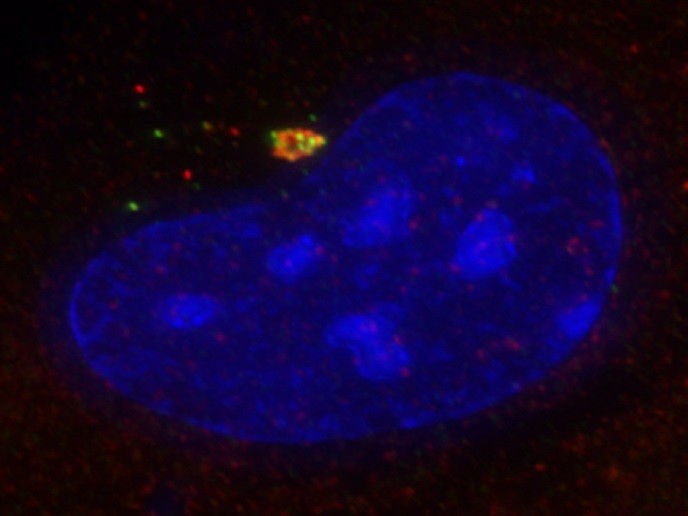Centriolar satellites play a key role in protein waste disposal from cells
Comprising a pair of centrioles in a cloud of pericentriolar material, centrosomes have diverse functions – from pulling the chromosomes apart during cell division to providing the base of a cellular ‘antenna’ called the primary cilium. Concentrated around the centrosome are small granules known as centriolar satellites. The EU-funded project SATBIOFUN explored centriolar satellite function using genetic manipulation in cultured human cells. “Key goals were to assess how important centriolar satellites are in centrosome activities such as centrosome duplication or cell stress responses, that can go awry in cancer cells, or in primary cilium formation that fails in ciliopathic diseases,” outlined Ciaran Morrison, professor of biochemistry at the National University of Ireland Galway (NUI Galway) and project coordinator.
Cells under stress from disfigured proteins
SATBIOFUN researchers used different approaches to selectively remove centriolar satellite proteins to ascertain their function. Genome engineering using CRISPR-Cas9 technology and gene knockdown by small interfering or silencing RNA (siRNA) generated human cell clones that lacked specific proteins of interest. Detailed microscopy assessed how these satellite-free cells responded to various stresses and stimuli. “In particular, we examined the involvement of centriolar satellites in the regulation of cellular responses to incorrectly folded proteins,” emphasises the Marie Skłodowska-Curie fellow, Suzanna Prosser. Misfolded or excessive proteins assemble around centrosomes in aggregate structures called aggresomes (see formation in photo). Proteins tagged with ubiquitin chains (red in photo) are targeted for degradation by cellular disposal units called proteasomes. Centriolar satellite proteins are found in aggresomes. Notably, loss of satellite components impaired the formation of the aggresome structures and the appropriate and timely degradation of the often-malfunctioning, misfolded proteins that comprise these assemblies.
Groundbreaking results create challenges
A key decision during the project was to follow the effect of removing the centriolar satellites to determine how cells respond to problems in protein quality control. As Morrison points out: “This involved some refocusing of our analysis of centriolar satellites, to take account of the new and potentially exciting biology emerging from the work.” Now a new path had opened up in the direction of human health, a second challenge was to investigate the findings in a disease-relevant context. This involved the establishment of new collaborations and the exploration of relatively unknown territory through new cell models.
The future for centriolar satellite research
The team continue to focus on the fate of damaged proteins in cells. They are examining mice deficient in centriolar satellite formation and the relationship with the organelle responsible for elimination of damaged proteins, the proteasome. Finally, they are looking at cell lines from patients with protein aggregation disorders to see if there are effects on the centriolar satellites. Decreased proteasomal activity is known to contribute to ageing and to retinal degeneration. “Our results raise the exciting possibility that satellite proteins contribute to diseases characterised by the accumulation of protein aggregates or that manipulation of the satellites could help prevent the development of such disorders,” Prosser says enthusiastically. One idea is that satellite-less cells have reduced proteasomal activity and that the effects of this may only be seen in older cells. “Our vision for future research based on our encouraging results will involve testing how pathogenic variants of satellite or aggresome proteins affect cell function,” concludes Morrison.
Keywords
SATBIOFUN, centriolar satellite, proteins, centrosome, disease, stress, misfolded protein, cell stress, proteasome



